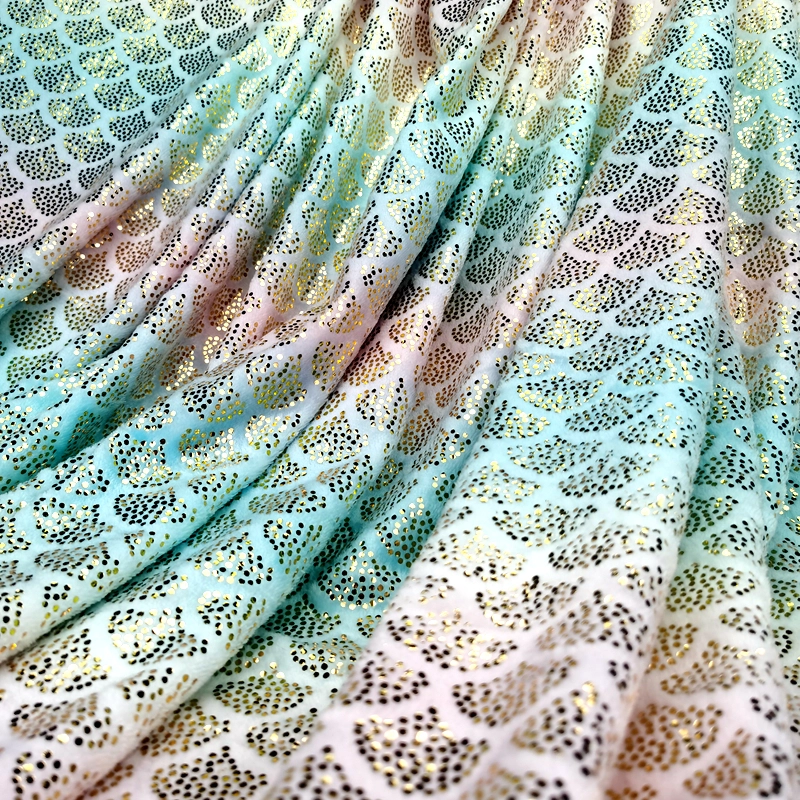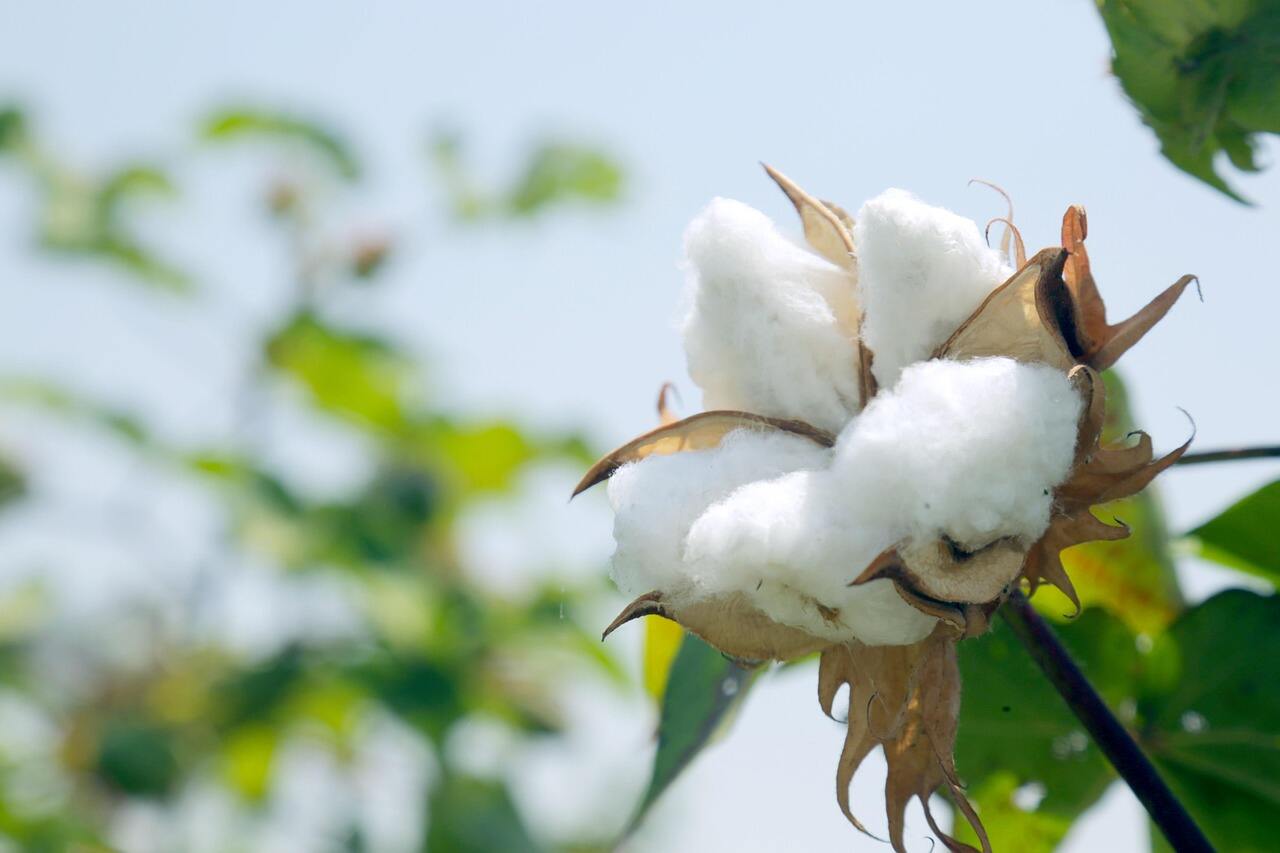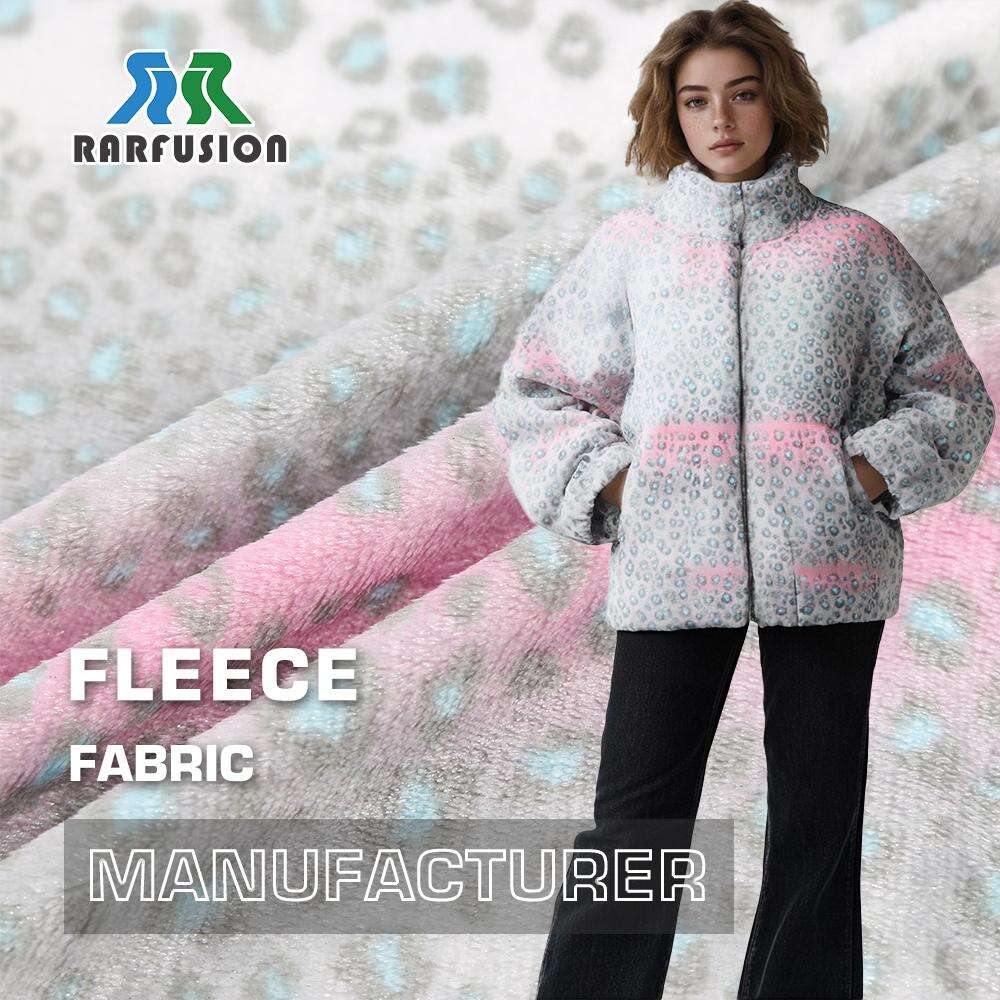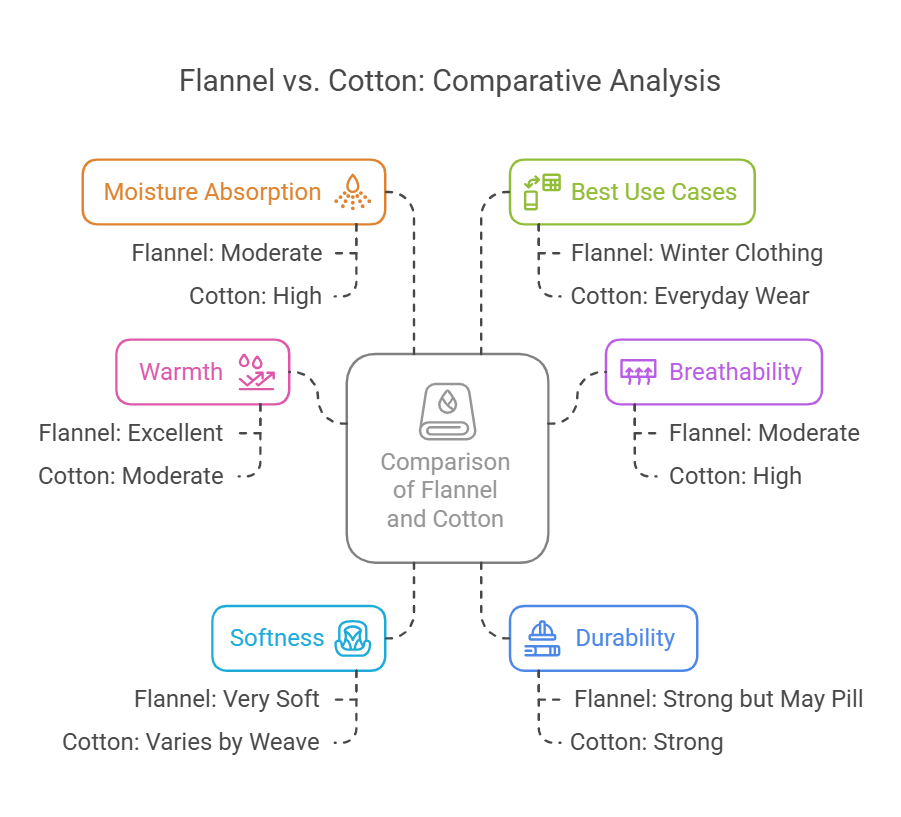1. Introduction
Choosing the right fabric for your needs can be tricky. Flannel and cotton are two popular materials, each with unique benefits. Whether you're looking for warmth, softness, or durability, this guide will help you decide which fabric suits you best.
2. What Is Flannel?
Flannel is a soft, woven fabric made from cotton, wool, or synthetic fibers. It is brushed on one or both sides to create a slightly fuzzy texture, enhancing warmth and comfort.
Key Features of Flannel:
-
Soft and warm texture
-
Good insulation for colder weather
-
Available in various weights and patterns
-
Naturally breathable but retains heat well
-

3. What Is Cotton?
Cotton is a natural fiber derived from the cotton plant. It is widely used for clothing, bedding, and other textiles due to its breathability and durability.
Key Features of Cotton:
-
Lightweight and breathable
-
Soft and comfortable on the skin
-
Absorbs moisture and dries quickly
-
Comes in various weaves and finishes
-

4. Flannel vs. Cotton: Head-to-Head Comparison
Feature |
Flannel |
Cotton |
|---|---|---|
Warmth |
Excellent for cold weather |
Moderate warmth |
Breathability |
Moderate |
High |
Softness |
Very soft due to brushing |
Naturally soft but varies by weave |
Durability |
Strong but may pill over time |
Strong and withstands frequent washing |
Moisture Absorption |
Moderate |
High |
Best Use Cases |
Winter clothing, pajamas, bedding |
Everyday wear, summer sheets, shirts |
5. Pros and Cons
Flannel Pros:
-
Ideal for winter wear and bedding
-
Soft, cozy feel
-
Available in stylish plaid designs
Flannel Cons:
-
Can pill over time
-
Retains heat, which may be uncomfortable in warm climates
-
Heavier than standard cotton
Cotton Pros:
-
Versatile for all seasons
-
Highly breathable and moisture-wicking
-
Soft and durable
Cotton Cons:
-
Wrinkles easily
-
Lighter cotton fabrics may not be warm enough for winter
6. Choosing the Right Fabric for Your Needs
-
For warmth and coziness: Flannel is the best choice.
-
For breathability and versatility: Cotton is the better option.
-
For durability and everyday wear: Cotton outperforms flannel.
-
For winter bedding: Flannel provides superior insulation.
-
For summer bedding and clothing: Cotton keeps you cool and dry.
7. Care and Maintenance
Flannel Care Tips:
-
Wash in cold water to prevent shrinkage.
-
Use mild detergent to maintain softness.
-
Tumble dry on low to avoid pilling.
Cotton Care Tips:
-
Wash in warm or cold water for longevity.
-
Iron to remove wrinkles if needed.
-
Avoid over-drying to prevent shrinkage.
8. Conclusion
Both flannel and cotton have their advantages. If you prioritize warmth and comfort, flannel is your best bet. If breathability and versatility are key, go for cotton. Understanding their differences helps you make an informed decision based on your lifestyle and climate.
Which fabric do you prefer? Let us know in the comments!
Table of Contents
- 1. Introduction
- 2. What Is Flannel?
- Key Features of Flannel:
- Soft and warm texture
- Good insulation for colder weather
- Available in various weights and patterns
- Naturally breathable but retains heat well
- 3. What Is Cotton?
- Cotton is a natural fiber derived from the cotton plant. It is widely used for clothing, bedding, and other textiles due to its breathability and durability.
- Key Features of Cotton:
- Lightweight and breathable
- Soft and comfortable on the skin
- Absorbs moisture and dries quickly
- Comes in various weaves and finishes
- 4. Flannel vs. Cotton: Head-to-Head Comparison
- Feature
- Flannel
- Cotton
- Warmth
- Excellent for cold weather
- Moderate warmth
- Breathability
- Moderate
- High
- Softness
- Very soft due to brushing
- Naturally soft but varies by weave
- Durability
- Strong but may pill over time
- Strong and withstands frequent washing
- Moisture Absorption
- Moderate
- High
- Best Use Cases
- Winter clothing, pajamas, bedding
- Everyday wear, summer sheets, shirts
- 5. Pros and Cons
- 6. Choosing the Right Fabric for Your Needs
- 7. Care and Maintenance
- 8. Conclusion


